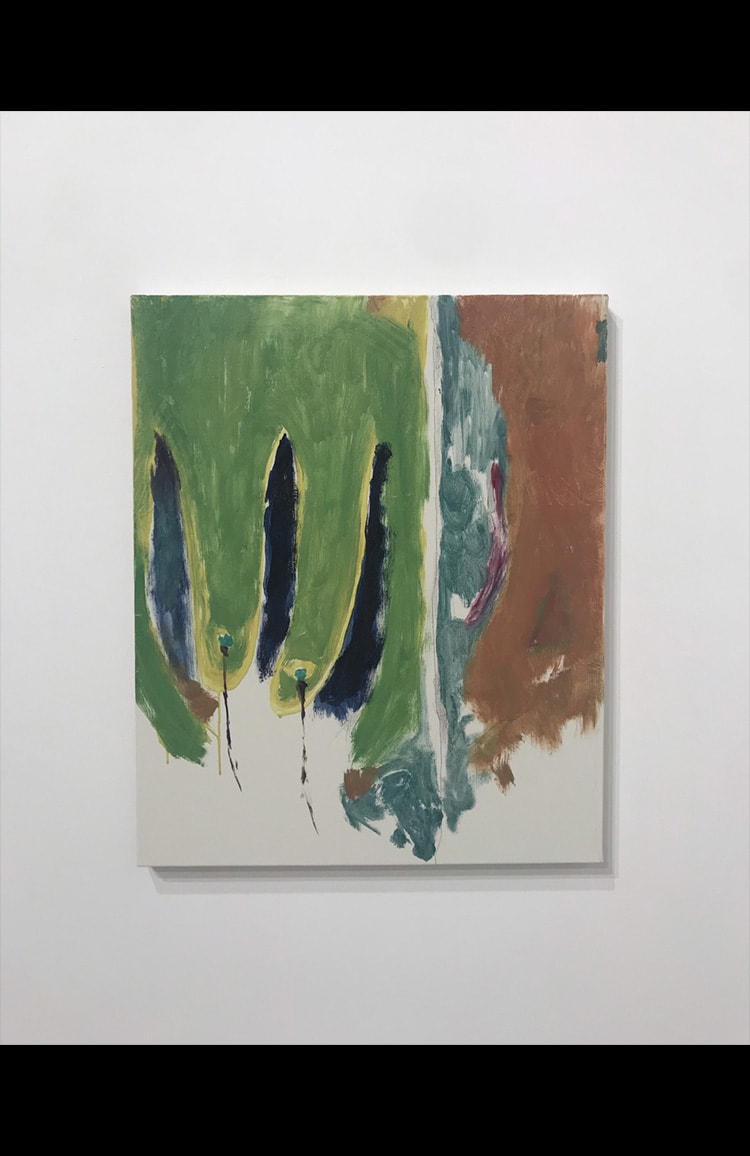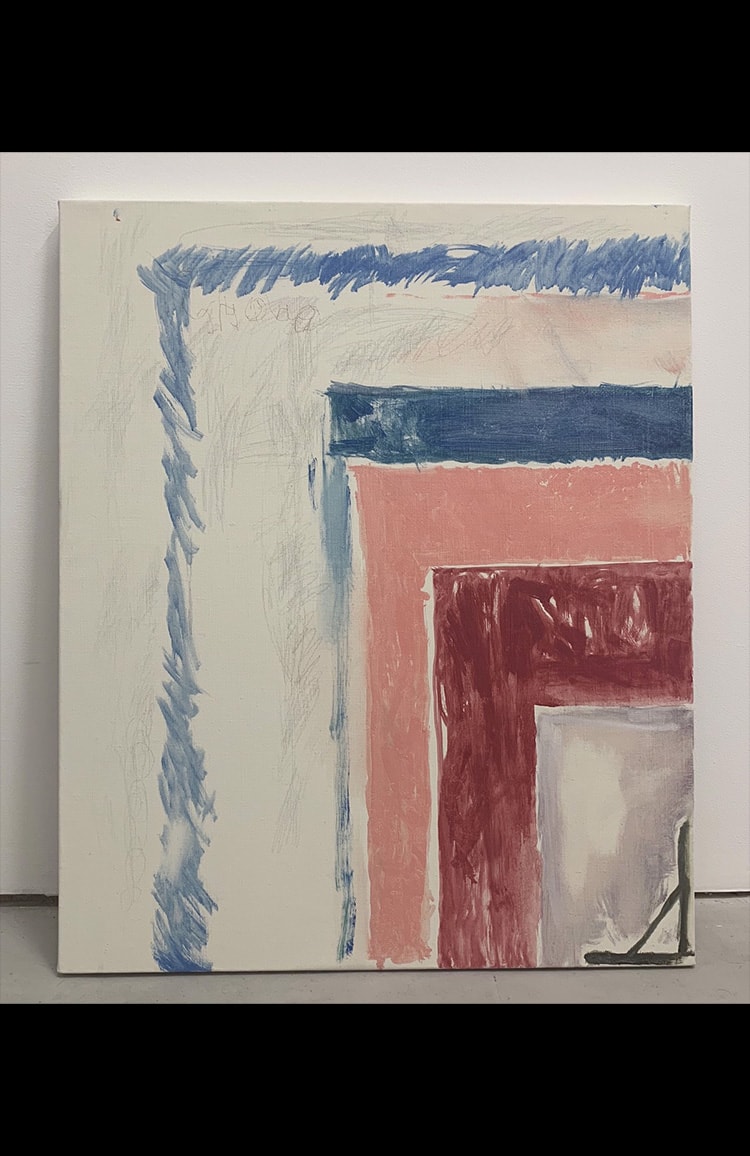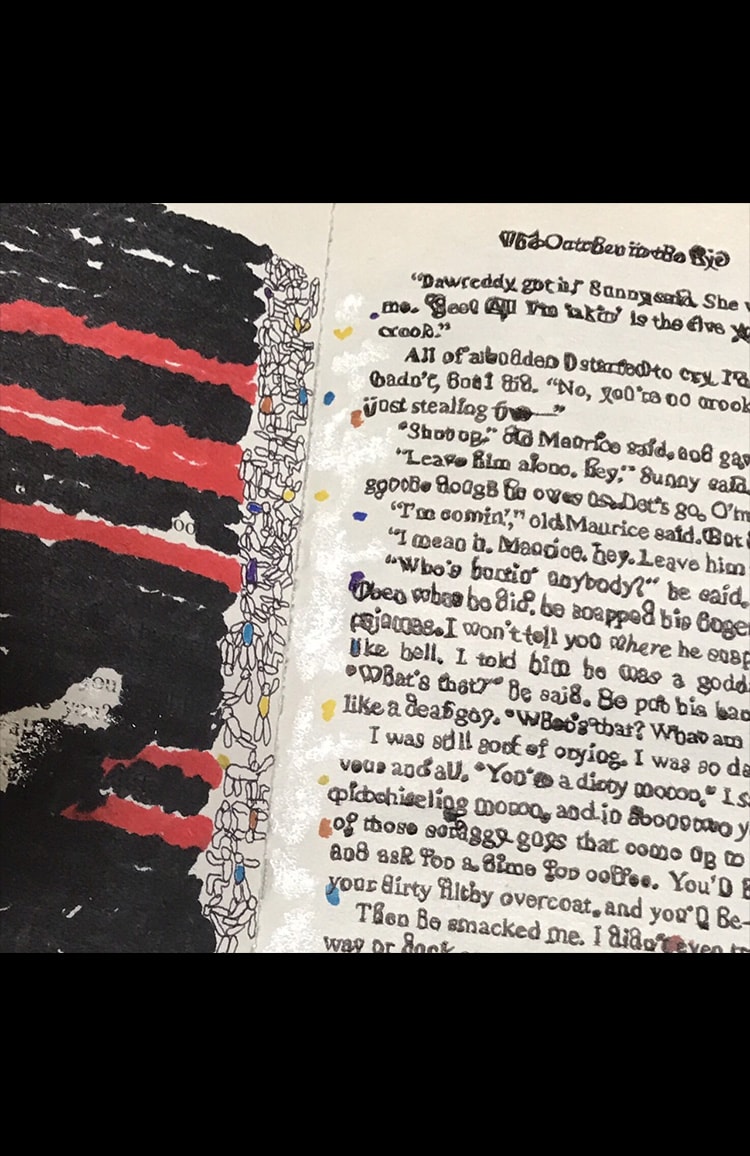IL__The condition of forming a painting... I'm curious to know about that in detail. For example, how do you recognise a painting as one?
KM__To be honest, I have not yet reached that answer, and I think it's up to the individual to decide what they perceive as a painting. Personally, I don't see a painting in photography as a painting - it's just photography. Paintings are a physical phenomenon that exists only when they are touched or seen directly.
IL__I'd like you to talk about ‘Buttery FL’, a painting you made in 2016, which seems like one of your earliest paintings? The painting is abstract, and the image reminds me of certain symbols... Also, the title ‘Buttery FL’ is unique; do you have any strategies for deciding the titles?
KM__Yes, ‘Buttery Fl’ is one of my earliest paintings, and it also began the series of my work I made using the anagram technique, alongside ‘R read idea ‘MMIMM’.
became interested in the concept of a name since I started thinking about the condition of painting. Before I made ‘Buttery Fl’ I was somehow attracted to the motif of the butterfly and wanted to paint something related to it.
Through ‘Buttery FL’ I wanted to represent my perspective about the phenomenon or image created by the name 'butterfly,' the opening and closing movements of a butterfly and its symmetry. I then fixed it onto the canvas using a technique of monotype. If you break down and rearrange the word Butterfly, you get Buttery FL, F, and L melting like butter, which has a completely different meaning from the word butterfly. A name, like all words, doesn’t have mass, but it can generate phenomena or images. Things can be recognized and perceived differently depending on the angle and the way they are arranged - this is something I consider essential to my present work.
IL__Your interest in words can be seen in your other work, but I particularly want to ask you about ‘Mom wine, I'm women,’ which was exhibited in the group exhibition ‘Speculation 6Real’ at Kodama Gallery in 2019. In this work, the artist’s name was Etsuko Matsushita.
KM__I anagrammed a sentence ' I'm women,' and 'Mom wine' appeared from that, and I used it as a part of the title.
I often write down random names, sentences, and poems in my notebook, and before I made this work, the phrase ' I am women' caught my attention. Throughout the process of thinking about the meaning of women, like yourself, a woman, my maternal grandmother came up...and her name is Etsuko Matsushita. From the point I thought about the influence my grandmother had on my behavior, my thoughts, and my self-formation, I wanted to represent the presence of my grandmother that may exist in me in my work. Probably the percentage of myself in my work is approximately 99%; the rest is perhaps someone or something which influenced me. In "Mom wine, I'm women," the work could be completed as 100% with putting an element of my grandmother, Etsuko Matsushita.
As I mentioned earlier, I like to think about the conditions of things, such as the boundary of painting, and whether the frames are included in the concept of a painting. If you follow this thought through, you have to doubt everything about the painting concept, like, if the frame is part of the painting, is the gallery a part of it also? *laughs*
It is only my guess, but I think that the majority of people who came to the group show looked at the painting while holding the press release in their hands, holding all the details of the work, including the artist’s name. I imagine they looked at ‘Mum wine, I am women’ and then checked the artist's name; at that moment, Etsuko Matsushita became a part of the painting.
IL__I feel like your interest in words, such as anagrams and the process of naming, seem to be firmly embedded in the formation of your paintings. Do you write? Also, how did you become interested in language?
KM__Yes. I write down sentences and names that catch my attention in a notebook daily, and I write poetry too. I've always loved reading, especially the writers Yukio Mishima and J.D. Salinger. If someone asked me to name the people who influenced my work the most and made me want to make art, I would definitely choose those two and Richard Prince.
















